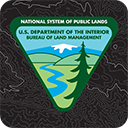Trestle Stabilization on the Transcontinental Railroad Grade
Bureau of Land Management
In 1869, workers completed one of the United States’ most significant technological feats: the Transcontinental Railroad. The railroad linked the country from East to West, opening up the American West for rapid development. A little over a century and a half later, the Bureau of Land Management (BLM) plays an important role in keeping the history of the railroad alive for members of the public to enjoy. The BLM manages nearly 90 miles of the old railroad grade in Utah’s west desert as a National Backcountry Byway. The byway winds through the remnants of ghost towns and includes interpretive sites. However, the original railroad trestles face threats from erosion and the BLM works to preserve this piece of history by periodically conducting trestle stabilization projects.
Although northern Utah is a relatively dry area, heavy rain events can take place over short periods of time, leading to drainage problems around the railroad grade. For example, in March 2015, a portion of the railroad experienced a series of torrential rainstorms. These storms resulted in catastrophic erosion under one of the railroad trestles. Approximately ten feet of sediment was lost under the trestle leaving several pilings completely unsupported and the trestle itself in danger of collapse.
“When damage to the structures making up the railroad occurs from catastrophic erosion, those structures must be stabilized lest they be lost forever,” BLM Salt Lake Field Office Cultural Resources Program Lead Michael Sheehan wrote in a document.
After a series of site visits and consultation with the Utah State Historic Preservation Office, the BLM developed a treatment strategy. The agency worked to stabilize the exposed piers with pressure treated posts and then subsequently rebury them. This approach accomplished the goal of stabilizing the piers and the trestle they supported. By burying the stabilizing posts below the original surface, they are not visible. With ongoing monitoring and maintenance, this stabilization will ensure the integrity of the trestle for many years to come.
Visit the Transcontinental Railroad Grade National Backcountry Byway and find yourself stepping back in time. Twenty interpretive sites along the way offer a glimpse into the Chinese and Mormon railroad workers’ lives, pottery sherds, and metal work. You can also learn more about the Transcontinental Railroad and see sites by using the Travelstorys audio tour. The audio tour will guide visitors down 90 miles of original hand-constructed Transcontinental Railroad grade. The audio tour can be downloaded on mobile devices through the Travelstorys app or on the web, and is free to all users.
Remember to respect and protect cultural artifacts: take only photos and leave only footprints.
Due to its unique history and scenic beauty, the Transcontinental Railroad Grade is an Area of Critical Environmental Concern and is listed on the National Register of Historic Places. Find more information here.
